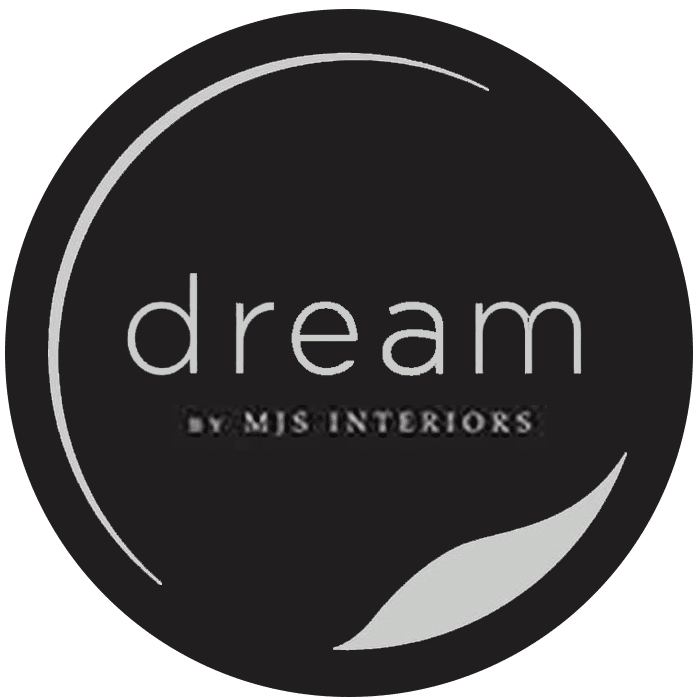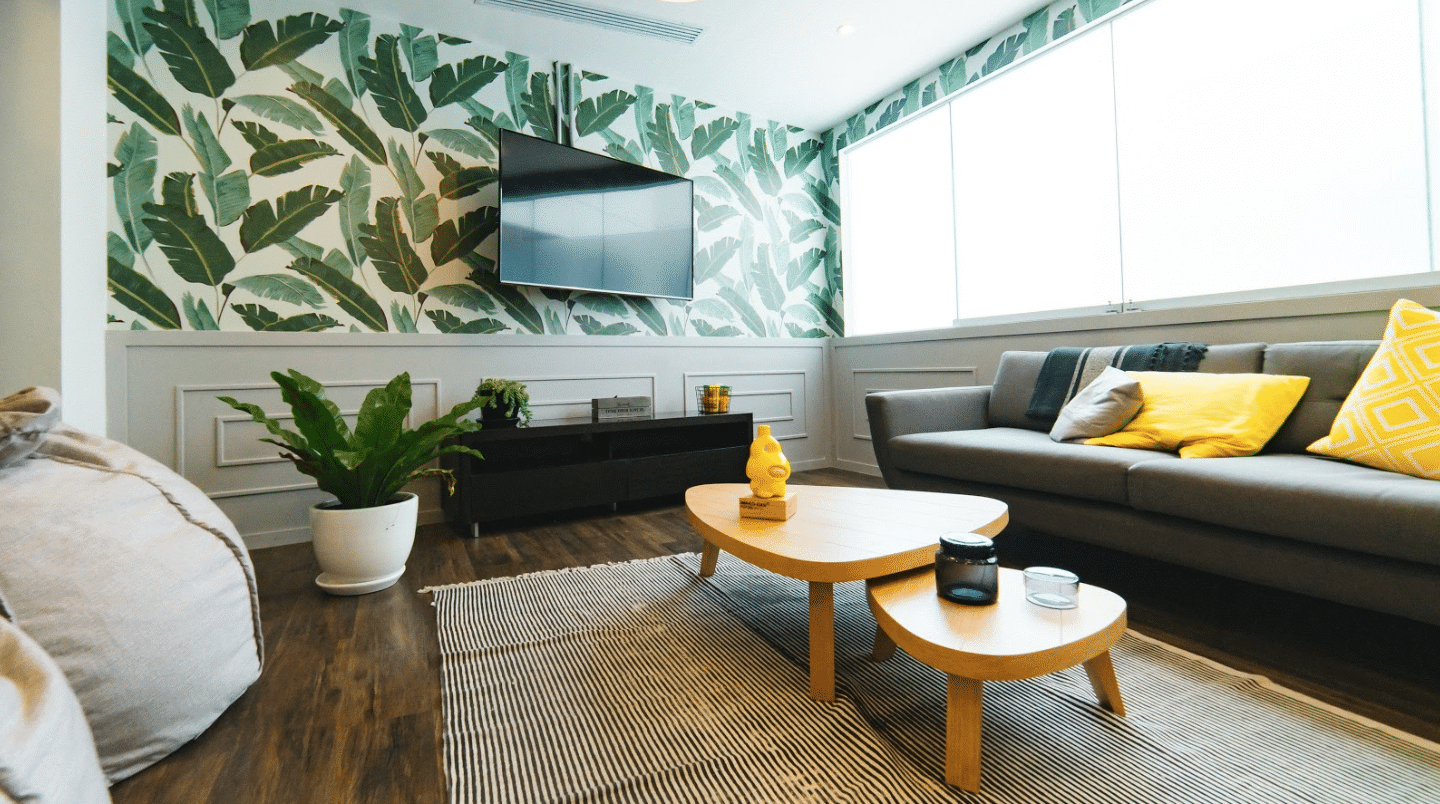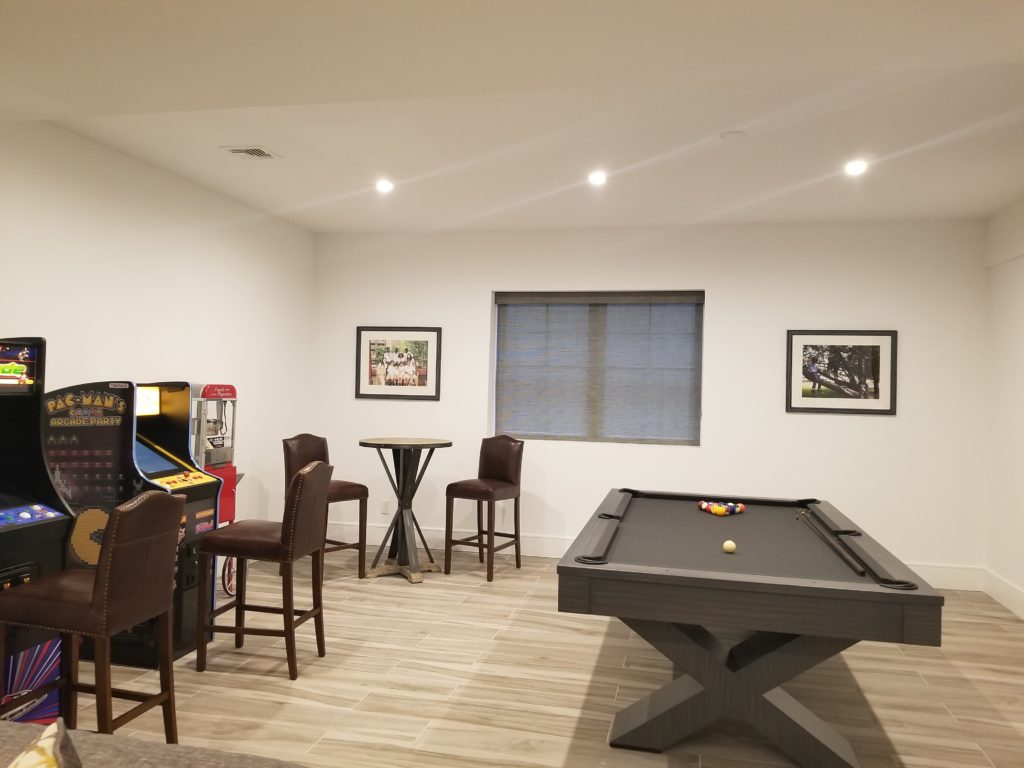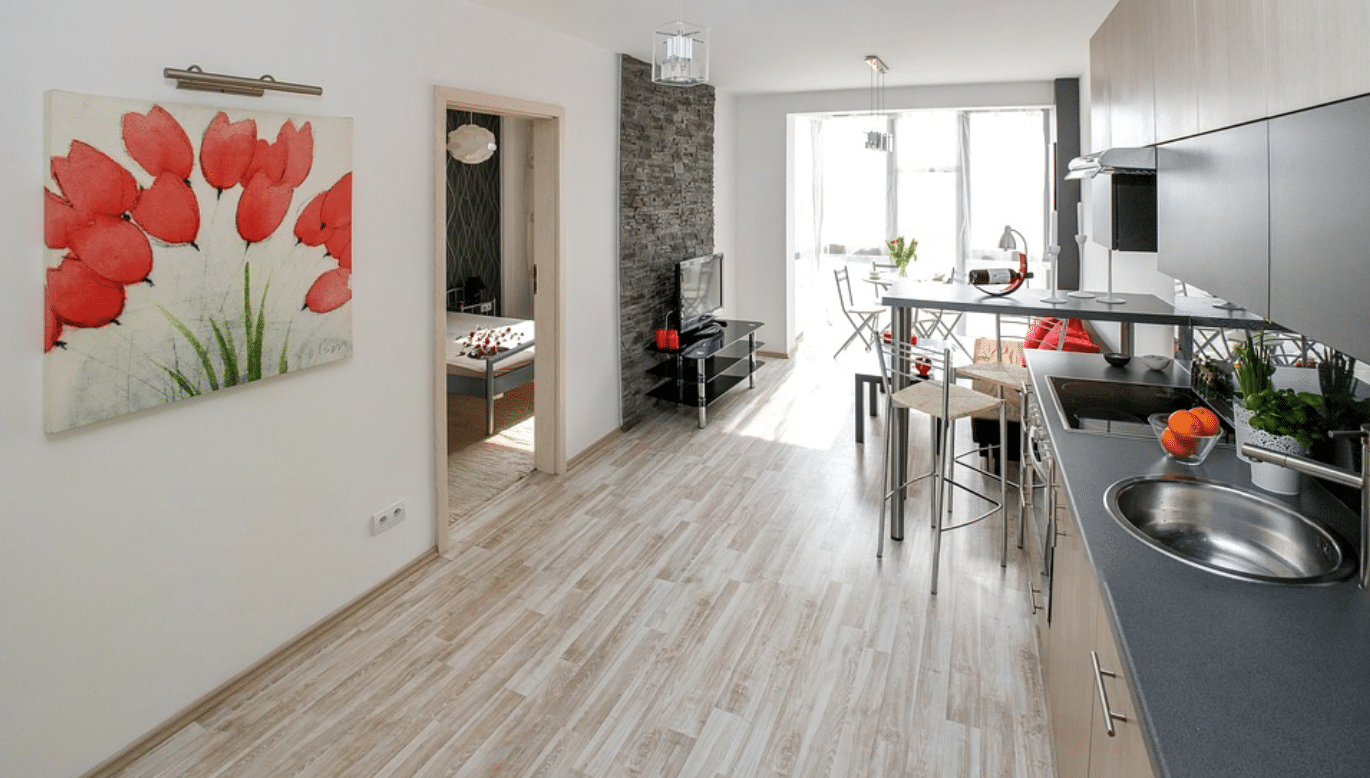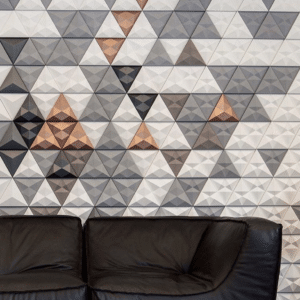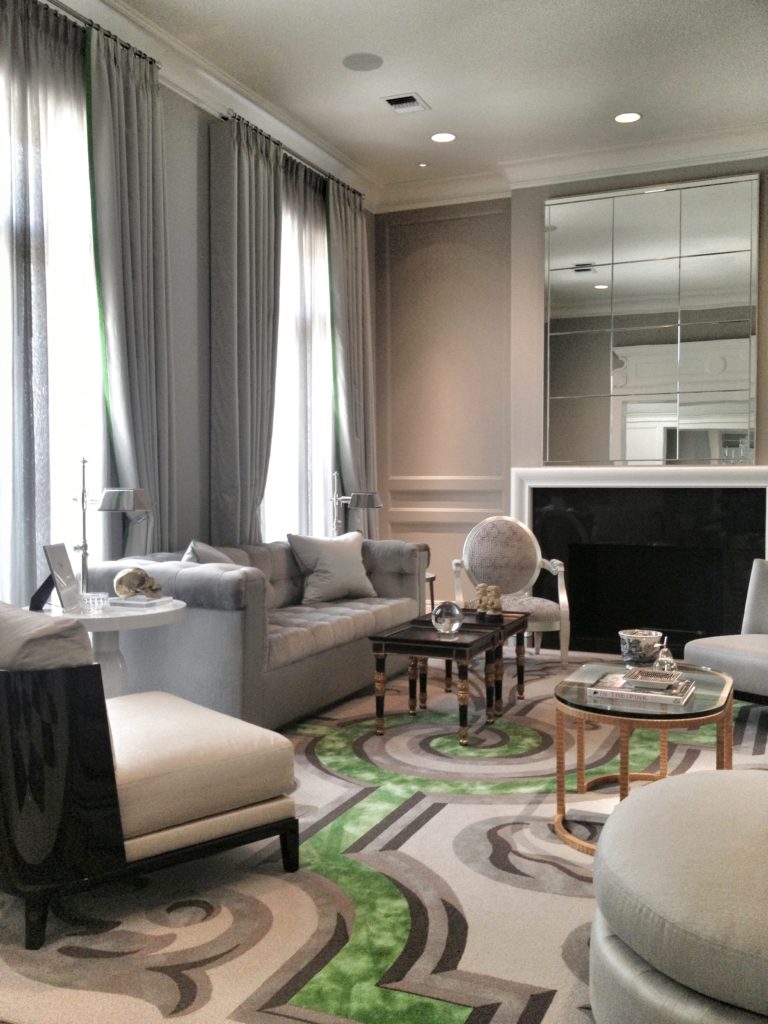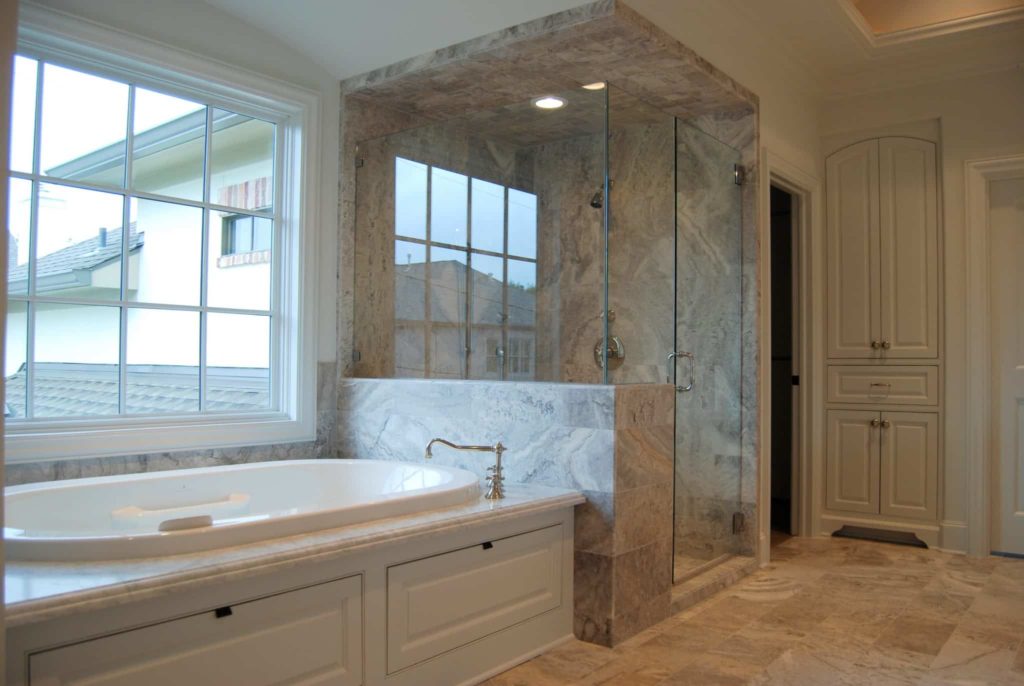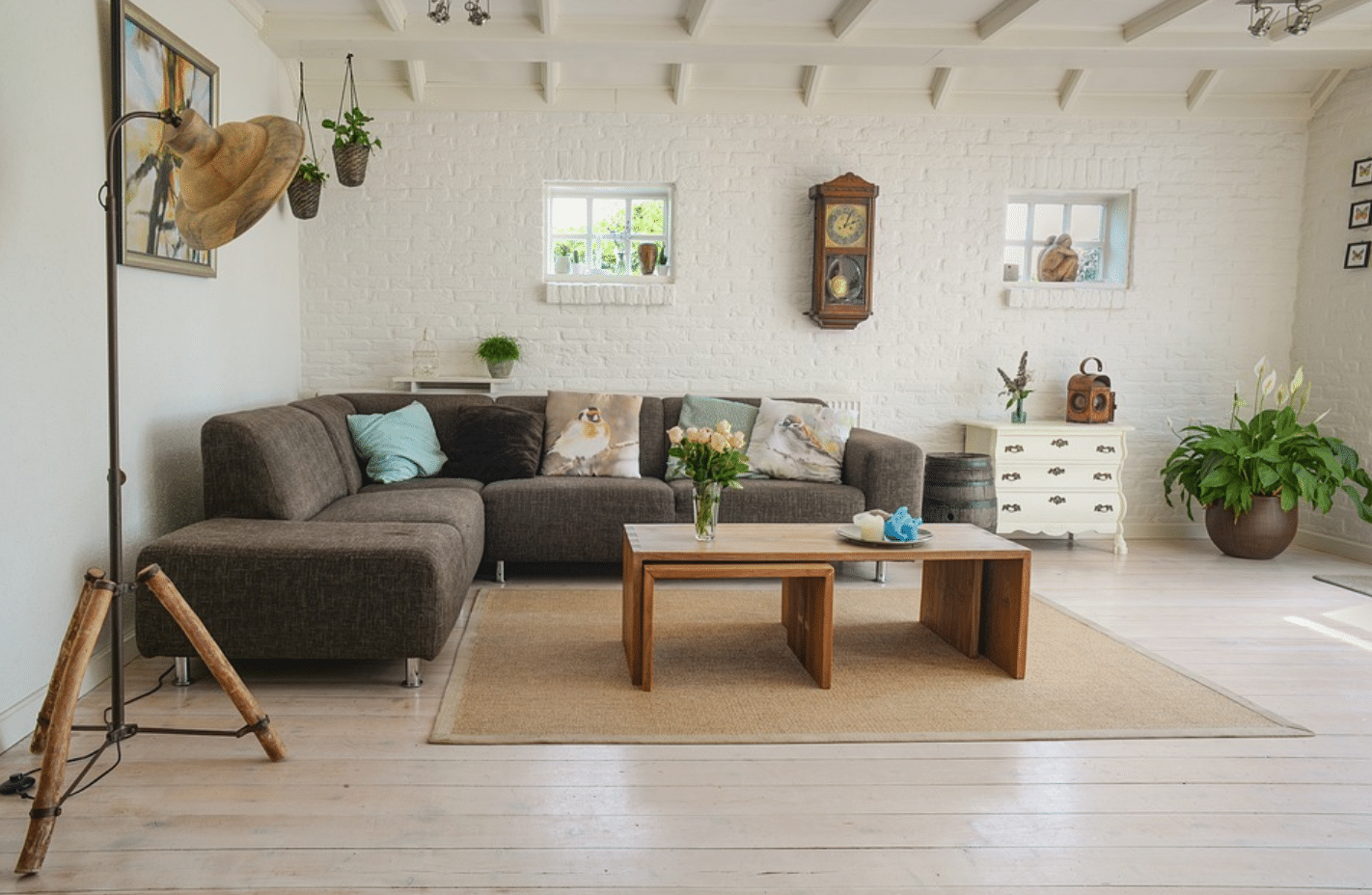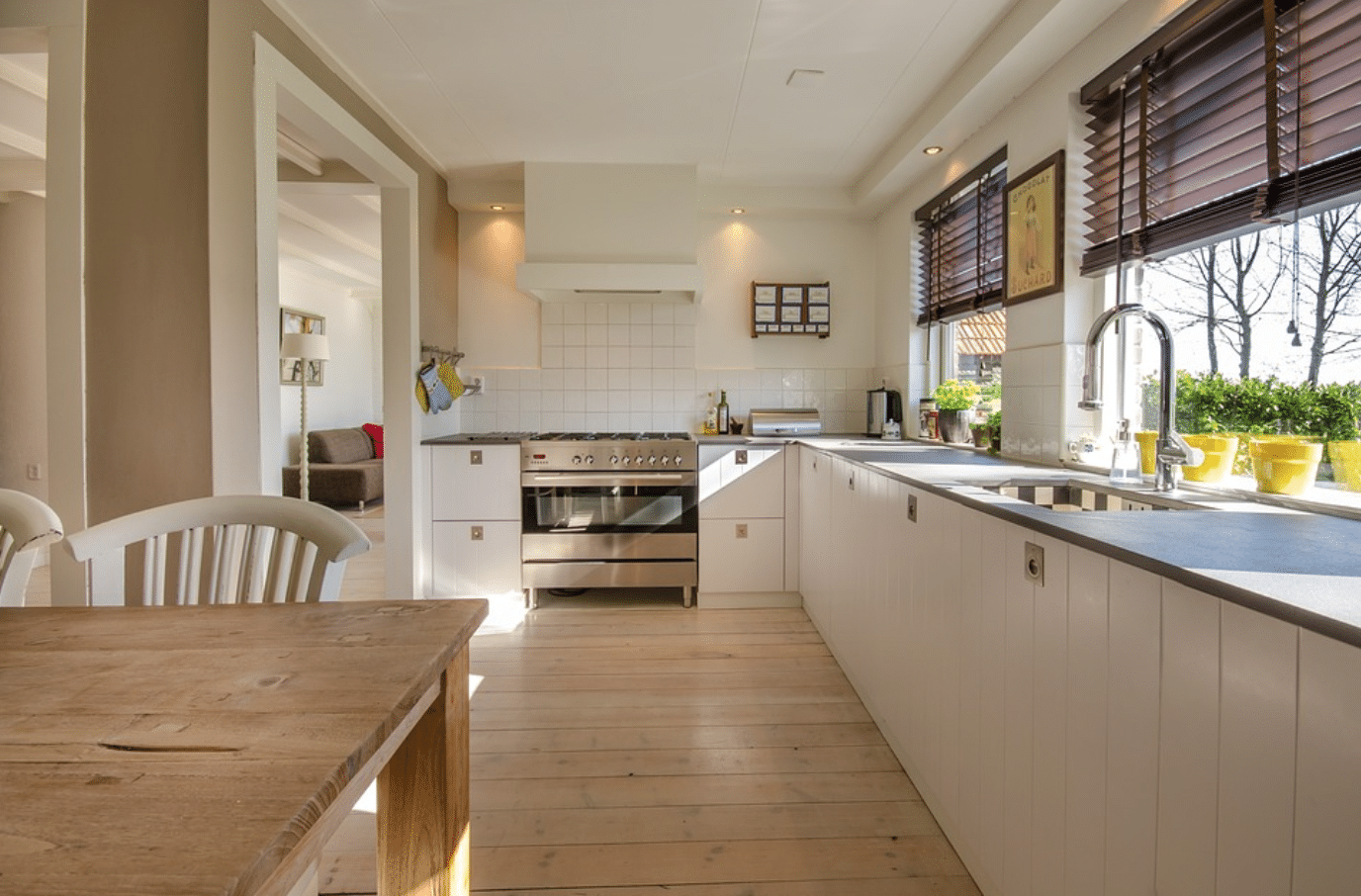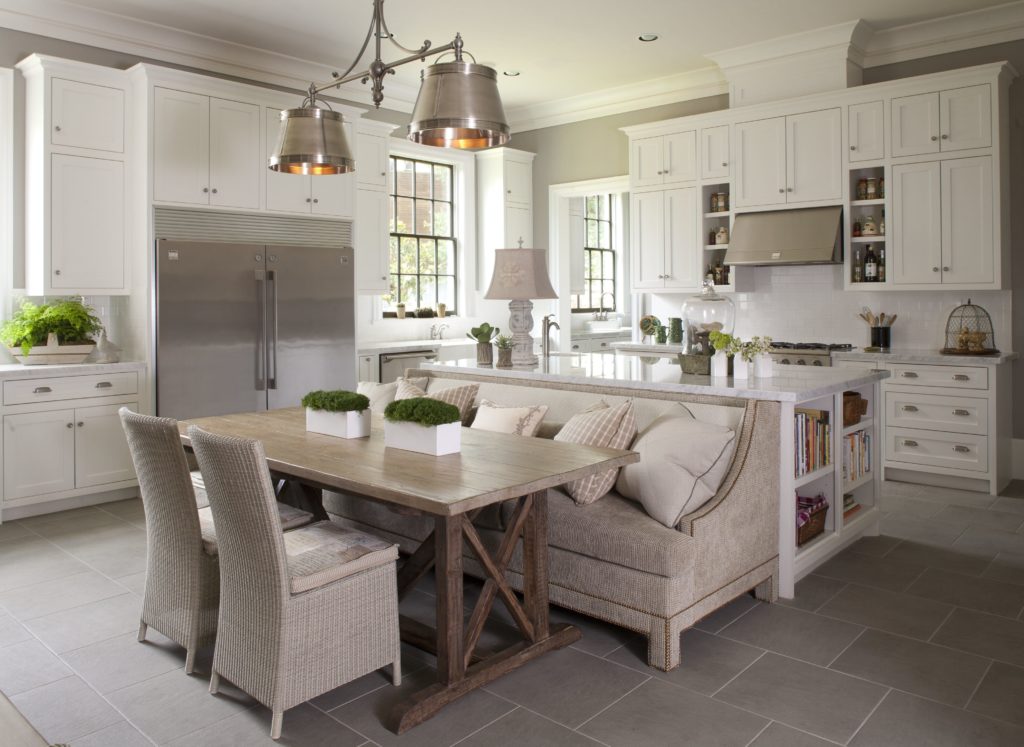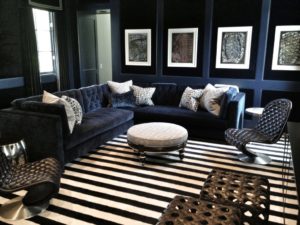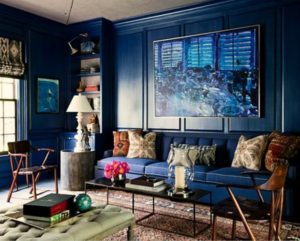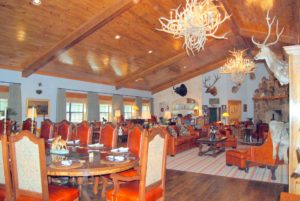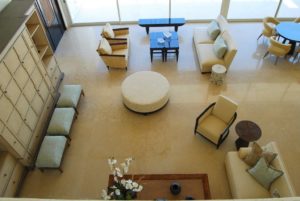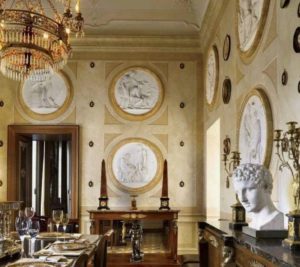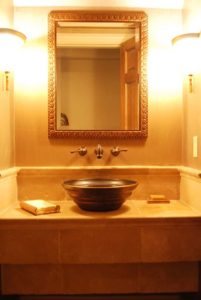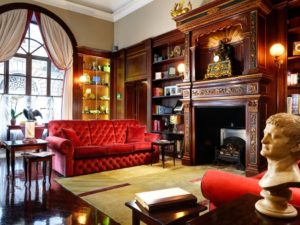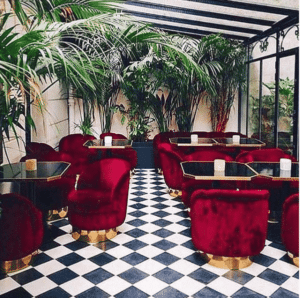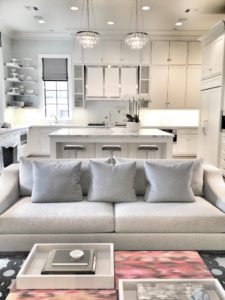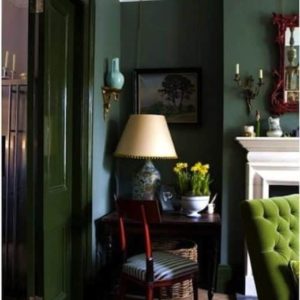How to Create your Dream Living Room
Your living room should be one of the focal points of your house, where lots of living is done. Unfortunately, most of us spend very little time actually using our living room. Looking to create a living room you can actually use? Before you lose your mind trying to decide on the perfect living room, relax. Follow these steps for an easy, stress-free approach to creating that perfectly lived-in space.
Creating a Lived in Living Room
A great living space starts with a great idea. It’s important to spend a little time thinking about your goals for your living room. How do you envision your space? Should it be modern and open? Would you like a complete overhaul, or would you prefer to repurpose what you already have? Do you have children living with you? Pets? Are you working with a shoestring budget? Whichever scenario applies to you, creating just the right room layout and design is the main goal.
Try to decide what you want the room to feel like. If you want something that functions more as a media room, you might just want to upgrade your tv and your seating options. On the other hand, a more showy, elaborate space will require a larger budget and a completely new design. Whatever your tastes are, creating your dream living room, lived in, or not, can be fun.
Try a Virtual Room Designer
Want to play with the layout of your room without moving all the furniture? Make use of a virtual room design tool. You can view before and after designs to get a feel for how your living room could look. These tools allow you to create your dream room in a few easy steps. Simply draw your space, add furniture and you’re done! You’ll get an instant 3D rendering that shows you the new space you’ve created in just a few clicks.
The Devil is in the Details
If you’re not sure where to look for ideas for your perfect new living space, Google is an excellent resource. A simple search will return dozens of ideas. Pinterest is another helpful tool that can showcase virtually unlimited design ideas. If you can dream it, we can do it at Dreams by MJS.
Set your budget, choose your color scheme, and your layout, and we’ll do the rest. In a short while, you’ll be enjoying your dream living room that you created.
Interior Design Games: How to Make Decorating Your Home Fun
Decorating your home isn’t always enjoyable--some folks find it downright daunting. If you want to decorate your home but you’re not sure where to start, or how to get inspired, these helpful hints will have your creative juices flowing in no time.
Finding inspiration in everyday things
Inspiration is everywhere you look. Start by just creating a plan for how you think you’d like your room to look. Whether this is jotting down a few notes, or actually sketching out the room itself, planning out how you want your room to look can help maintain your vision.
Find a few pieces you’re tired of. If you can’t or don’t want to repurpose them, get rid of them. Clearing clutter frees the mind, allowing you more creativity and freedom in design choices. Getting started is simple.
-
- Start small--there’s no need to reinvent the wheel here. Quick refreshes can bring new life to any room. Have you ever visited a friend’s place after they’ve rearranged their living room? There might not be anything new in the room, but a simple change like moving the couch can change the entire look of that room.
- Repurpose what you already have. Do you have a table in your living room that would be better suited for your bedroom? Switch it up. You don’t need to spend money to redecorate your place. Applying a fresh coat of paint can wake up an old piece of furniture and create a whole new dynamic in your living space.
- Make a game out of it. Challenge yourself to revamp a room in your house or apartment in an hour. Decide to only spend $50 retooling the bathroom. Rework your bedroom using only things you already have--the list goes on and on. Small challenges like this will keep you on your toes, forcing you to be creative with your designs. You don’t need to spend a lot of time, or a lot of money. You can even take on the task of some diy projects. Seeing a project through to the end brings a great sense of accomplishment.
Let rooms evolve naturally
By exercising a bit of patience, you can let your rooms evolve naturally. Stay away from trends that make your space look dated. Keep challenging yourself to find new and different ways to keep the space fresh.
Yard sales and thrift stores are veritable treasure troves for home decor. Sometimes you can even find brand new items at steep discounts. New-to-you items are a great way to change things up without spending a fortune.
Taking some before and after pictures can also be a great resource for keeping things interesting. Seeing how a room used to look can give you ideas for what you’d like to do again, or mistakes you’d like to never reveal. Take pictures of other spaces as well. You’ll never know when inspiration will strike!
The next time you’re in a design rut, use these helpful ideas to inspire your creativity. Here’s to more beautiful spaces in 2018 and 2019.
Interior Design Trends for 2018 and 2019
Your space is just that--yours. If you want to make your personal space feel more personal, check out these trends in home design for the rest of this year and next. From different textures to the must-have colors of the season, we’re here to tell you about the hottest room decor trends to try, and which ones to forget.
Less stuff, more clarity
2018 has been the year of the purge. More and more people are scaling back, adopting a more minimalist approach. We’ve gotten rid of more of our stuff, clearing not just our space, but our minds as well.
This decluttering trend isn’t going anywhere in 2019. More than decluttering, more and more Americans are looking for more efficient, clean designs, hoping to maximize their space to create a soothing, comfortable environment.
What’s in store for home design?
When it comes to our living spaces, we’re all about function and efficiency. Small details are making big statements. Over the next year, you can expect to see :
Natural wood finishes
While dark woods have been the trends in recent years, this year is all about creating more natural looking environments. Natural wood creates a warm environment that lets light in. Pair this with warm nature elements to create an inviting space. Combine natural wood with details like stone or pebble accents or concrete furniture to create a truly unique, natural look.
Neutral spaces with pops of color
Nude and soft matte finishes are king this year. Instead of making the entire room bright and colorful, this year is all about accenting. Add pops of colors through pillows, rugs or wall art, while keeping the rest of the space calm. Sage green is the hot color this year, blending perfectly with the natural woods we discussed earlier. Soft, matte finishes keep things comfortable and pair well with any details.
Neutrals pair well with most other colors to make accents the main focal point. This allows for personal touches to round out that more personal environment.
Statement walls
Photo credit: flickr.com
Wallpaper is making a come back. Rather than cover your entire living space, focus on creating a single statement wall. Highlighting a single wall in a room or across multiple rooms is an excellent way to add some color and texture to any space. Fabric, wallpaper, tiles or paint are all great ways to enhance the overall atmosphere of any room.
Photo credit: flickr.com
Sustainability and Upcycling
Repurposed objects are a great way to add personality and function to virtually any room. Giving new life to old pieces is not only better for the environment, it’s better for your wallet. Use items you already own to decorate your house.
Compact, efficient designs often benefit from upcycling. You may find that a table you were tired of in the living room might be better suited for a bedroom. Moving the table may save you having to buy a nightstand, saving you from having to get rid of the table, and creating a more eco-friendly option for your home. See how these work in tandem?
If your home is in need of a facelift, these trends can help guide your decision. Here’s to happy home decorating!
How to Pick the Right Interior Design Firm
When you’re looking for an interior design firm to decorate your home, it’s important that you find one that’s a good fit. You’ll want to hire a firm that keeps your personal style, and your budget, in mine. More importantly, you want a firm that listens to your needs. So how do you find just the right one?
Do Your Research
First things first. Before you begin your search for a design firm, it’s important you do your research to better understand what you’re trying to do. Start with a basic plan. Do you want a minor change, like new window treatments downstairs, or are you looking for something more complicated, like a complete kitchen remodel? The job you want done will dictate the type of interior architect you need.
Once you’ve determined the type of project you’re looking to have done, start gathering names of local professional designers. After you’ve found a few names, find their reviews, and start talking to the ones that you shortlist. Be sure to check references of any designer you are considering and provide as much information as you can about the project. Check references and go with the designer that best suits your needs.
Find Your Style
Start by finding pictures of spaces that match your design style. Think about colors, textures, overall aesthetic. Design magazines are a great starting point to find styles that speak to you. Are you a post-modern lover, or is your style more classic? Looking to spice things up with some bright colors, or just looking to keep things neutral? Whatever you’re looking for, make sure you properly communicate your ideas.
Set Your Budget (and Stick To It!
This is perhaps the most important step. The average homeowner spends between about $1,800 and $8,500 on their home design project, though that amount can obviously vary. Discuss your non-negotiables with your designer, as well as your “nice to haves”, while communicating the exact amount you have to spend. An experienced designer will take this into account when developing your design. Remember--great design doesn’t have to break the bank!
Why Dreams by MJS is the Right Design for You
At Dreams by MJS, we believe that great design can be easy, and accessible. As a top interior design firm in Houston, we’ve made it our mission to fulfil our customer’s most outrageous design needs. When you contact us, we’ll discuss all of your options. Keeping your budget in mind, we’ll develop a comprehensive plan to bring your designs to life. We are committed to making your dreams a reality.
Every project we take on is custom-designed to meet your needs. We know that no two people have the same vision. It’s why we’re a YES company. If you can dream it, we can do it. We’ve been delighting our customers for more than 30 years--it’s time for us to delight you.
Fall Decorating Ideas
Decorating for fall can be tricky for people living in warmer areas. After all, the true mark of fall is when the air seems a little crisper than usual, and you start breaking out your cozy sweaters and blankets. However, you can still get into the fall spirit regardless of where you live! The weather in Houston, for example, tends to stay in the 70s during the fall season, so while you might still be rocking a t-shirt and shorts well into October, here are some fall decorating ideas to give your home a cozy autumn vibe.
Pumpkins, Pumpkins, Pumpkins
Pumpkins are pretty much a fall decorative staple, and their beautiful and timeless look never gets old. Depending on the color scheme you are going for, you can decorate using traditional orange pumpkins, or you can get creative and spray paint pumpkins to achieve a certain look. White pumpkins are extremely popular during the fall season, as they provide a more muted, toned down look. Pink pumpkins are also a big trend this year, and many craft stores sell faux pink pumpkins so that you don’t have to do any of the dirty work. Depending on the colors inside and outside of your home, you can decide whether you’d rather go the natural route with classic orange pumpkins, or if you want to experiment with some fun colors.
Spice Up Your Entryway
Your entryway is the first thing people see when they come to your home, so why not make it pretty? One way you can spice up your entryway is by adding a cool wreath to your front door. You can either buy a premade one or DIY your own! If you choose to make your own wreath, head to your local craft store and pick up a simple wreath. From there, you can choose decorations such as ribbon, pinecones, and any other fall items you want to put in your wreath. Hanging a fall wreath on your door will have your guests talking, and you’re sure to get plenty of compliments! Another fun way to decorate your entryway is by arranging some crates and haystacks around the door. You can stack pumpkins, scarecrows, and other fall decor on top to create a warm, welcoming vibe.
Add Cozy Touches
When it comes to decorating for fall, it’s all about the details! One of the easiest ways to warm up a space is by lighting some candles. Bath & Body Works makes some great fall-themed candles, and with scents like Pumpkin Pecan Waffles and Frosted Cranberry, your home will smell yummy and inviting. Fall is also a great time to break out your cozy blankets and throw pillows. If your collection could use a serious upgrade, stores like Target and HomeGoods sell cute, affordable throw blankets and pillows to spice up your couch or bed. Lastly, hanging up string lights gives your home a warm glow and also allows you to use less overhead lighting, which can be especially relaxing.
This fall season, be sure to try out some of these decor ideas and watch your home transform into a cozy autumn wonderland!
Keep Your Home Office Comfortable and Organized All Year Long
Keep Your Home Office Comfortable and Organized All Year Long
Creating a comfortable, inviting home office can be a challenge. Dreams By MJS Interiors is here to assist with your home office needs. Whether you work from home every day, or just occasionally, you want your home office space to be comfortable, as well as functional. We’re here to help with all your home office needs in Houston. Read on to learn more about some things you can do for a seamless work from home experience.
Maximize your space
We’re ready to help you design a comfortable, efficient home office that helps you get the job done. The first thing you need to decide on for your home office is your space. Home offices come in all shapes and sizes, some with locking doors, some just a laptop on a kitchen table. Before you decide on home office decor, it is important to understand your space constraints. Just because you’ve got a small space does not mean you can’t have a nice set up.
Things like an L-Shaped desk give you two separate work spaces, allowing room for your computer, phone and any paperwork. Short shelves can be tucked beneath your desk and act as great hiding spots for your cords. Wall or ceiling mounted lighting will brighten up your room without taking up space.
Don’t forget to embrace natural light wherever possible. It can even help your mood!
Most importantly, make sure you have a good office chair. The last thing you want is to be uncomfortable during your work day. This is your personal space--make it a place you want to spend your time. At Dreams by MJS Interiors, we design your home office with function in mind.
Keep things cozy
Since you spend a lot of your time at work, you want your home office space to be comfortable. Adding something as simple as an ottoman to put your feet up, or a soft, comfy blanket, can make you feel at home. Don’t forget to add some personality like artwork or photos. A few things that make you happy can really set the tone for your workspace and make you more productive.
Try to keep your personal work space from getting cluttered. Keep your things to a minimum. Your most important items can be proudly featured in your home.
Make your work space separate from home
We cannot stress this enough. While it may seem tempting to lump work space with personal space, it’s so important to keep the two separate from one another. One good tip to do this is to keep set office hours. Setting a schedule for yourself helps you stay disciplined and remained focused on your work. It is still work, after all. It may be tempting to break for a few hours during the day to binge Netflix, but by sticking to true work hours (be it 8-5, 12-8, etc), you ensure you achieve a good work-life balance. Save your errands and activities for outside of working hours.
Don’t just lay in bed or sit at the kitchen table with your laptop--actually get up each day and go to a separate designated area. Doing this will make work feel like work, giving you freedom in the other areas of your home and ensuring you’re not associating your entire home with work. Working from home can be a great benefit, but it is critical that you keep your work life and your personal life separate. Your home office space will help you stay efficient while at work and keep your personal time just that, personal.
Dress for success
In order to enjoy a successful work from home experience, it’s important to dress the part. While you don’t need to go all out in a power suit, you shouldn’t just roll out of bed and stay in your pajamas, either. Wake up, shower, brush your teeth and dress comfortably. Just because you’re working from home does not mean you need to look like a complete slob. You don’t need to dress up to dress well.
Let us create your home office space in Houston
We can help you design a comfortable, effective personal work space. Contact the team at Dreams By MJS Interiors when you want to create a warm, comfortable home office in Houston. Talk to one of our seasoned design professionals today.
Luxury Interior Design
It could be stated that luxury is subjective, but we’d argue that luxury exists because we can all agree on what’s sophisticated and what’s not. Luxury is many things, but mostly it’s:
- Sophisticated
- Technologically savvy
- Comfortable
- Convenient
- Self-aggrandizing
- Timeless
Luxury items are self-aggrandizing because the mere possession of lavish items increases our status and satisfies our egos. Studies have shown that even looking at lavish and luxe items from prestigious brands can trigger the medial prefrontal cortex (MPFC) and precuneus, which are associated with self-reflection and self-relevance.
Luxury interior design is also timeless because it doesn’t conform to trends and it only increases in value as it ages.
Luxury interior design follows these very same principles. Luxury interior design is equally comfortable as it is beautiful.
At Dreams By MJS Interiors we’ve undertaken multiple high end interior design projects from redesigning the oval office to redesigning Oprah’s house in Chicago, among a list of other high end celebrities.
Here, we’re going to discuss what adjustments you can make to take your interior design from austere to luxury.
5 Considerations for a High End Home Interior
Luxury is Available for Every Design
The very principle of high end interior design is that there are luxury options for even the most austere designs.
Now, luxury can come in two forms: aesthetic or comfort.
Upgrading the technology in your living room - adding a projector, bigger TV, or entertainment system- can add some much needed amenities and comfort to your space.
On the flip side, a luxury ottoman, glass coffee table with beech wood legs, or some high end furniture can transform a dull space into a luxe living room interior.
Focus on Focal Points
Focal points are especially important for luxury living room interior design. This is the first thing that visitors will spot when they enter your house.
A focal point could be a brick fireplace or a sculpture piece at the entrance of a walkway. Vaulted ceilings, expensive art, and sophisticated lighting fixtures are all great examples of luxury pieces that will draw the attention of the room.
Positioning your most pristine furnishings and room fixtures to serve as a focal point of your room will add even more opulence by serving as the center of focus for anyone in the room.
Quality is Paramount
Again, luxury is about convenience and comfort. Never settle for low quality materials that will break after limited uses. More importantly, don’t settle on low quality items in the pursuit of style. Aesthetic and texture will naturally flow and emanate from your most sophisticated items.
Always choose high quality furniture and fixtures that add value to your home. Settling for shotty materials will be pretty easily noticed and take away from that sense of opulence you’re trying to convey.
Think Historical
This one should not be too surprising, but people just naturally associate historical items and aesthetic with luxury.
Many design trends nowadays actually borrow from historical styles, such as ancient Greek and Baroque era trends. Maybe the most prominent is the use of Byzantine style art to decorate ceilings and influence architecture during initial home designs.
Regardless of your style, the addition of some antiques, sculptures, and historical art could add a significant sense of luxury and lavishness to any home interior.
Make Use of Space and Texture
Finally, once you have all of your fixtures picked out, it’s time to start looking at your interior as a whole. Use your most prominent luxury items as focal points to a room and use complementary textures to create a certain flow throughout the room.
Generally, luxury interior design is not cramped or cluttered. Let natural lighting in and space out furniture to let the room breathe and flow naturally.
With these tips in mind you can make use of your most sophisticated pieces and create an air of comfort and beautiful aesthetic that simply breathes luxury.
Top 10 Interior Design Ideas For Your Living Room
The living room is one of the most important rooms in your entire house. This room is where you will host most of your gatherings and formal events with friends and family. These can range from having the neighbors over to watch the city's football team to hosting a family party. Regardless of how you choose to utilize your living room’s function, it is bound to be a focal point of your home. It is extremely important to come up with and execute interior design ideas for living rooms and then properly decorate them. However, how can you go about transforming an everyday living room into something that can impress visitors? Here are the top ten interior design ideas to transform your living room.
Set The Right Tone
When it comes to interior decorating, the most important thing is to set a positive tone the moment someone walks into the room. This could mean eye popping colors that make someone feel happy, or it could be a stand-out piece of furniture that immediately catches the eye and gives off an air of high quality. First impressions are extremely important, and impressing your guests the moment they step into the room will make them much more receptive to the rest of the room.
Try A Theme
One of the most fun design ideas out there is to design your living room with a specific theme in mind. This theme could be virtually anything, ranging from a room dedicated to your favorite sports team with old memorabilia to an outer-space themed room. Since a themed room could potentially stick out from the rest of the house it is a major risk to take. However, if you manage to pull it off correctly it could allow you to create an amazing unique experience for your family and friends.
Family Friendly
Although this is more of a practical design element rather than a thematic one, making your room family friendly is extremely important. In your gatherings with family and friends you are likely going to play host to parents and their small children. Unfortunately, these children will love to run around and spill things all over your living room. That is why you should design your living room so that it is easily able to entertain a younger audience, and is easy to clean up in case of emergency. Although they may not be the primary demographic you are trying to impress, keeping visiting children happy and occupied could save you multiple headaches in the long run.
Eye-Popping Rug or Carpet
The first thing people are going to notice about your living room are its walls and floors. An otherwise quality room can be ruined by ugly flooring, and a mediocre room can be elevated by creative wall designs. Finding adequate carpet that matches your plans for the walls and the room’s furniture can be quite difficult. However, if you successful pull it off then a quality carpet can really pull a room together and push it over the top.
Comfortable Seating
Another practical design element is to include comfortable seating in your living room. As stated before, your living room is likely going to host a lot of parties and gatherings. In addition, a lot of these events are going to involve your guests using your seating for extended periods at a time. Uncomfortable seating is extremely unpleasant to deal with for long periods of a time, and your guests may become dissatisfied. You could have the best looking living room in the world, but if it isn’t practical and lacks functionality, then its ability to host events will be greatly hampered.
Consistent Scheme
One of the most important design elements of a room is a consistent overall scheme. You want your furniture to flow and play off each other, not starkly contrast. Without a consistent color scheme or pallete your living room will simply look like a mess of random items thrown together. Find a color scheme that fits you and your home best, and then stick with it throughout the design process to ensure a living room that is pleasing to look at and flows nicely.
Bright Design
While this isn’t a must-have for living rooms, bright designs tend to be a little more well received than their dark and dreary counterparts. Walls painted with bright colors like yellow and white seem to glow and make the overall atmosphere of the room more inviting. In addition, have plenty of natural or artificial light in the room to further lighten the atmosphere. No one wants to have a celebration in a dark and dreary room, so try to make your living room as inviting as possible.
Use Artwork
One of the easiest ways to spruce up your living room’s design is to use various forms of artwork and paintings. Artwork can be a great compliment to your furniture and design, and can really complete the look and feel of a room. In addition, artwork can be a great conversation piece for you and your guests. Conversations could revolve around where you got the artwork, what the meaning behind it is, and who the artist is.
A Classic Timeless Look
If you don’t feel like researching how to create a chic modern living room, then you can always try to recreate a classic timeless look. These living rooms typically contain a simple design with standard elements like a hearth and fireplace. While this design may not be the flashiest, it definitely can invoke some nostalgia for you and your guests. These designs are often said to be the most inviting and comfortable. Sometimes a trip down memory lane is more appealing than the glitz and glamour of modern designs.
Minimalist
Living rooms are meant to be simple and inviting, so try not to clutter your living room with too many design elements. It might be tempting to go over the top, but often times this can lead to your living room becoming a cluttered mess and hard to look at. Try keeping things minimal and focus on completing basic design elements well, instead of trying to dabble in outlandish ones. If done correctly, your minimalist living room will be both stylish and spacious for your events.
Interior Designer Vs Interior Decorator: What’s The Difference?
Designing a home is an art form that very few people can truly understand and master. The task is filled with jargon and concepts that are similar, but not quite the same. This can make fully understanding the intricacies of design and the people who do it quite challenging. No example is more true than the debate over what the difference between an interior designer and an interior decorator is. The two are often mixed up by the uninformed, even though they are not one and the same. The debate between the positions of interior designer vs interior decorator is something that amateurs in the housing industry have struggled with mightily. Homeowners often struggle in choosing which position they should hire for their projects, as they don’t know what the difference between the two entails. Even though the two positions are both quite important when it comes to the completion of a home’s interior, each has their own unique aspects that sets it apart from the other. So what exactly is an interior designer, and what does an interior designer do that separates one from an interior decorator?
Interior Designer
An interior designer handles all aspects that redesigning a room may require. For example, an interior designer can completely redesign a space, and always aims to get the maximum value out of a room. The interior designer may place a new window to let in more natural light, or they may knock down a wall in order to make a room feel more open and inviting. The basis of interior design revolves around changing the functionality of a room to best match the vision that the owner and designer share. Interior design usually involves in-depth planning and thinking, and can take quite a long time. In order to become an interior designer one must attend school for a two or four year program. Here the designer will learn all sorts of concepts such as the basics of architecture and the fundamentals of engineering a successful remodel. Due to their history of education and experience, an interior designer is more likely to be able to completely take over a project. An interior designer should be able to manage all aspects of a project, including working with various contractors and other outside help. If you’re looking to completely alter the landscape of a room, then you should probably look into working with an interior designer. An interior designer will able to help you on a much deeper level than simply telling you want color to paint your walls or what curtains will look best.
Interior Decorator
Although interior decorating is less about creating new spaces and designs, that doesn’t mean that it is any less important. An interior decorator primarily focuses on what you already have, and then attempts to work with that to create a beautifully decorated room. For example, an interior decorator is much less likely to alter floor plans and divide a room into two, but instead may work to alter the room’s appearance to make it appear less empty. The interior decorator typically uses basic methods such as changing colors, altering furniture, and introducing singular items to change a room. An interior decorator may use less drastic methods in order to change a room, but that doesn’t mean that a particular room’s appearance will be of a lower quality than one that was completely redesigned. Due to their simpler methods, interior decorators usually require much less education and training than interior designers. Most interior designers have an understanding of the basics of design and have taken some hands-on learning, but a degree isn’t required. Interior decorators also usually take a much less controlled approach than interior designers. This typically means that you would have to work with contractors and control other elements of construction all by yourself. For some the added work may be a hassle, but others enjoy the extra control and freedom. Even still, an interior decorator may still provide input and insight on how to handle various problems and difficulties as they pop up. Sometimes a complete overhaul of a room isn’t necessary, and is just excessive. In some cases all you need to do to spruce up a room is to introduce a few new design schemes and correct some old ones. In these situations an interior decorator really shines and can be a huge help to your efforts.
Which One Is Better?
Now that you know the similarities and differences between the two, you may be asking yourself about which of the two is better and more useful. The answer, much like all of designing a home, is complex and revolves around many factors. The answer relies solely on what each particular room needs, and what the owner would like to see done with their home. For example, if you have a room in your house that seems dark and dreary, then there are multiple ways you can tackle the problem. An interior designer can install a skylight, cut out a new window, or knock down a wall to combine two rooms to make it feel more inviting. These are all great ways to solve the room’s dilema. However, they aren’t the only one solutions. In contrast, an interior decorator may propose to simply change the room’s color scheme to a much lighter color in order to brighten the room and make it seem more inviting. So which idea is correct, and who should you hire for the project? The answer relies on what you want for the room and what you are willing to do to it. If you want a complete overhaul and redesign, then you should definitely look into hiring an interior designer to handle the project. However, if you feel that a room can be changed by altering a few design elements, then you should definitely look into working with an interior decorator. Like most things in life, the answer to your question isn’t simply black and white, and requires thought and reflection in order to truly find the right person for the job.
15 Interior Design Secrets from the Professionals
Looking for a complete family room interior redesign or some interior design secrets for selling houses? At Dream By MJS Interiors we have completed projects for the Four Seasons Residential Tower in Austin, as well as other sophisticated projects, such as a complete interior redesign of a two-story penthouse in Houston and a project for a Texas state senator at Camp Logan in Houston.
Throughout our experience, our team of professional interior designers has picked up some secrets that can be applied to any interior design project, whether it’s decorating modern living rooms or 19th-century Mediterranean decor. But we believe that knowledge is most effective when shared.
Here are fifteen interior secrets that the professionals use that can be applied to your next interior design project!
Design for Comfort
When starting an interior redesign, comfort and purpose should be your primary objective. More specifically, comfort should be your primary purpose. You want your home, living room, and bedroom to be an area of zen and relaxation, utilizing soft, earthy tones and plush furniture that is inviting and roomy.
This is why most designers recommend choosing your color palette as the first step in an interior design project. This is because softer colors will promote greater relaxation in more intimate rooms and darker colors will promote greater urgency in home offices and kitchens. By establishing a comforting atmosphere through the color wheel, you can begin assembling furnishings and home decor that will build up a room’s sense of comfort and purpose.
Focus on Focal Points
Think of the focal point of the room as the foundation of a house. The focal point is the first thing that visitors will spot when entering a room. It could be a fireplace, a window, or a table that establishes the flow of the room. The focal point will dictate the positioning of the furniture and the arrangement of walkways and seating. Use furniture arrangements to bring more focus to the focal point of a room and establish a balance thereafter.
Don’t Leave Walls Bare
This tip isn’t as much of a secret as it is a necessity. Bare walls can make a room feel suffocating and simply unsophisticated. Wall mount lights, artwork, and mirrors can add significant depth to a room that may appear smaller than it actually is. Plus, wall fixtures add to the flow of a room, making rooms feel more inviting. Imagine walking into a bathroom without a mirror? Creepy!
Everyone Forgets About Ceilings
Ceilings are the most neglected area of any room, but they can significantly add value to your house and depth to your design. Glass ceilings can enrich rooms with natural light, mural ceilings can compliment decor arrangements, and gold-tinted ceilings can add an unparalleled level of luxury to any home. Many argue that walls or furnishings tie rooms together, but why not ceilings?
Use Bold Colors Strategically
As previously stated, softer shades can breathe serenity into any room and make it more inviting. But a red throw pillow or an imperial blue lamp can add a nice visual contrast. Don’t utilize bold colors too frequently, but use them as secondary focal points to tie the room together through color contrasts.
Utilize Color Accents and Contrasts
Color truly is everything when it comes to finishing a design:
- Complimentary colors can create illusions that make rooms appear bigger and bolder
- Accent colors can tie the room together by contrasting focal points on opposing walls or surrounding trim
- Monochromatic colors create a pleasant and inviting atmosphere.
Natural Lighting is Everything
What separates a studio apartment in a highrise from your stylish home living room is not the amount of furniture or the ceilings you have, but the availability of natural lights coming from your windows that make rooms appear bigger and more inviting. Sheer curtains allow for natural sunlight and are the perfect addition to a finished room.
Wallpaper Can Add Pop
Do you have a bare or ugly wall or ceiling patch you want to cover up? Well, some floral or monochromatic wallpaper can add pop to any room, as long as it fits within the general color scheme. Cheap, effective, and unnoticeable, wallpaper adds a fresh aesthetic to any room and can tie a room together if done well.
Rugs Are Inviting
Wood and laminate flooring often evoke mixed emotions, none of which are too inviting. A rug could quickly fix that by arranging them properly in walkways and living rooms to focalize furniture and other decor.
Furniture and Spacing
You may notice that interior designers never push furniture against a wall. All furniture is usually positioned at least a foot away from walls to actually make rooms appear larger and more inviting. It may sound strange, but arranging furniture with enough space from each other and any barriers can make rooms appear less suffocating and more inviting.
We Love Wall Lights
It’s true, wall lights can solve many of your existing interior design issues. Aside from covering up bare walls and accenting mirrors, they can add more light to rooms, giving it that added layer of zen. There’s nothing more uninviting than a dimly lit room.
Add Color to Trims
Window and wall trims are perhaps the most overlooked design aesthetic of any room...and ceilings! But there’s a great opportunity to add a splash of color to your lifeless wall trims to create some unique color contrasts and compliments that, again, tie a room together.
Consider the 50/150 Rule
This tip really applies to a fresh interior redesign or stripped walls. Essentially, you want to create a color contrast that is 50% lighter than the base with another color that is 150% darker than the base.
More Pillows!
Nothing is truly more inviting to a room than more throw pillows. They can add bold color contrasts and simply make a room feel more comfortable, literally!
Fixtures and Accessories Tie Everything Together
Finally, what truly ties a room together is furnishing and decor. From wall mounts to lamps and couches, choosing the right furniture will establish Feng-shui and influence how people interact and relax in your room.
Conclusion
For more design tips and tricks visit our interior design blog or contact us today!
